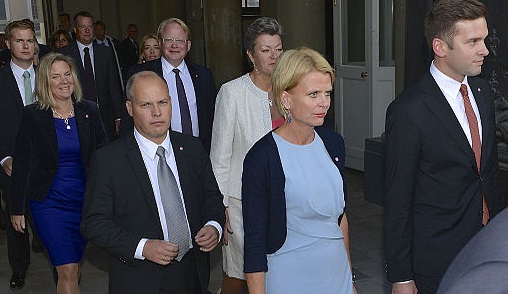Gender Responsive Budgeting (GRB) initiatives examine how governments raise revenue and allocate expenditures to advance or hinder the goal of gender equality. In a positive move for gender equality, the implementation of GRB featured in the 37th meeting of the OECD Working Party of Senior Budget Officials of member states, held in June 2016 in Stockholm.
GRB involves an analysis of the impact of policies and programs on different groups of men and women, and strategies to influence policies, priorities and decision-making processes in the budget. The Australian Government was a pioneer in adopting a gender analysis of the budget during the Hawke Labour government of 1984. Since the 1980s, GRB initiatives have expanded to every region in the world, including some 30 countries in the Asia-Pacific region.
The meeting of the OECD Working Party, which was attended by Sweden’s Minister for Gender Equality, Åsa Regnér, launched the report of a recent survey of gender budgeting practices in OECD countries and reflected on the findings. This discussion was significant for it underscored the growing number of international platforms recognizing the potential of GRB to meet women’s and men’s needs, reduce gender inequality and gaps and fostering accountability and transparency.
However, it is clear that many countries do not carry out systematic GRB. While the survey report is not yet publicly available, preliminary information about the meeting shows that a mere 15 governments, amongst the 34 OECD countries, are implementing, planning to implement, or actively considering GRB. Australia is not among these countries.
Most interesting from the details emerging from the meetings is the diversity of strategies and methodologies adopted by government led GRB initiatives in the OECD. This diversity has been borne out by expanding international research, which has highlighted differences in stages of development of GRB. Political, contextual, normative and institutional factors all contribute to explain the approach and maturity of GRB.
In some countries, the emphasis has been on building the demand for GRB via a positive political environment for gender equality and the mobilization of the women’s movement. For example, in Japan, the Gender Equality Act provides the basis for gender impact assessment and set the way for the integration of a gender perspective into some policy processes, in a challenging political climate. While the women’s movement played an important role in the advocacy for GRB in Japan, links with the decision-making processes remain weak as the goal of gender equality is still highly contested.
The experience in the United Kingdom highlights the role of a strong women’s movement and feminist activists in the Women’s Budget Group that have helped nurturing capacity and build the political momentum for GRB. This Group has on occasion, had strong engagement with HM Treasury including advisory support for pilot gender analysis on expenditure in 2003. Recently, it contributed to political debate on the impact of austerity policies.
Experience in countries that have formally adopted a GRB initiative has emphasized the importance of a conceptual framework for GRB backed by broad political support and constructive institutional arrangements. The institutionalization of GRB has taken a variety of forms including a constitutional provision in Austria and a financial act in South Korea.
Also important to the formal adoption of GRB is a positive collaboration between government officials, parliamentarians and activists. This was evident in South Korea where women in parliament, with support from the women’s movement, brought about the inclusion of a gender perspective in the 2006 Financial Act. This set the framework for South Korea to implement a four-year trial of gender budget statements, which has since had its implementation in the budget covering a growing amount and percentage of allocations.
Some countries have achieved a degree of implementation of GRB including gender analyses integrated into budget processes. Sweden has declared itself to be a feminist government, and has presented GRB as a feature of the government’s efforts to realize this political commitment for change. At the meeting of the OECD Working Party of the SBO, the Swedish Minister for Gender Equality, Åsa Regnér discussed changes introduced in the Swedish budget circular, ahead of the 2017 budget bill, requiring gender equality impact analyses to support policy and reform proposals and ensure that new policy be gender-sensitive. A detailed guide for equality analysis and the provision of training have underpinned this commitment.
The Swedish experience highlights the significance of a strategy for its sustainability, backed by political leadership, better accessibility and use of sex-disaggregated data and training of key policy actors. Despite these positive steps, to date no country has achieved GRB across the whole of budget.
While Australia no longer has any formal GRB initiatives, in Australia’s aid program, gender markers have been developed to track aid allocations on gender equality and women’s empowerment. These markers form part of Australian aid performance framework and have enhanced accountability on gender equality matters. However, there has been criticism of the strong focus on the budget planning stage rather than the implementation of these aid allocations. This approach has also been criticized by women’s organisations in Australia who have drawn attention to the low proportion of Australian aid activities targeting gender equality as a principal objective. They have demanded more transparency on how the Australian aid budget as a whole reflects political commitments and addresses gender gaps and inequality. These gender markers provide only limited information about how much funding has been allocated within activities that have gender as a secondary objective.
The Australian aid gender markers establish a useful starting framework and have important institutional support. However, the analysis of aid allocations needs more sophistication – and transparency – to assess gender impact fully. This is a reminder that strategies to link with the budget have persisted despite the resistance to GRB.
As the Australian government has allowed GRB to lapse in recent years, the non-government National Foundation of Australian Women has since 2014 produced a powerful analysis of the impact of budget measures highlighting its effects on gender equality (both positive and negative). The Australian Labor Party, currently in Opposition, has also published a Women’s Budget Reply Statement. These examples, as in the UK, underline the important role that alternatives to government-led GRB initiatives play in fiscal accountability and transparency and help build demand for a sustainable government GRB initiative to be reinstated in future.
With the announcement of the new Australian government, after a closely contested election, there is renewed focus on whether it is willing to embrace a GRB strategy. The recent emphasis on OECD shows how the OECD can play a role in fostering a link between gender impact analysis and the budget in member states and the broader international context and other country developments offers an additional optimistic point of leverage for renewing GRB in Australia.





Recent Comments